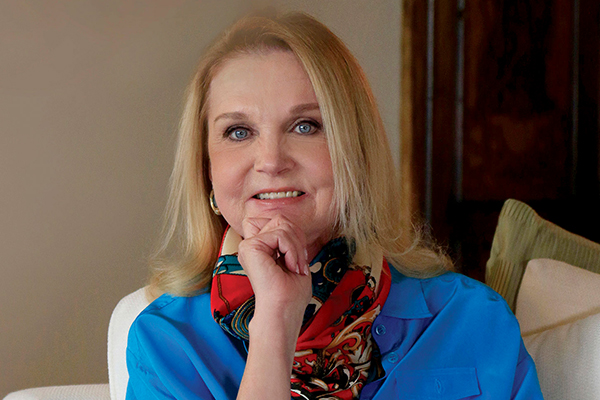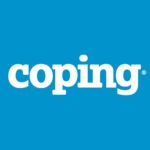New Year, New Me
A cancer survivor’s resolutions for recovery
by Ilse Anderson
I was on the cusp of my new life, traveling the world, growing as an artist, and exploring new avenues of spirituality. I was soaring into a bright, cloudless future, and then, on May 22, 2015, my doctor informed me I had stage IV oral cancer.
One month later, I underwent a three-quarter glossectomy and a tracheotomy. The 10-hour surgery involved cutting out most of my tongue and fashioning a new one from the tissue of my forearm. Cancerous lymph nodes were removed via an incision in my neck. I awoke from the surgery unable to swallow, speak, or move. And that was just the beginning. In the months that followed, I endured chemo and radiation (along with their painful side effects), took in all my nutrition through a feeding tube, and had to relearn how to speak and to swallow.
When December came, and I had begun the arduous process of relearning how to eat, my grown kids and I thought a change of scene would do me good. We rented a house in San Miguel de Allende in Guanajuato, Mexico, for the Christmas holidays, and in late December, I left the scene of my illness and the painful treatments required to survive it. For eight months, I had been a very sick woman. Sometimes I doubted I would survive, and yet, there I was, celebrating another Christmas, very much alive.
As the new year approached, I sensed a shift. The nausea receded, and day by day, I felt my strength returning. I didn’t need as much help accomplishing the simple tasks of daily life. For months I had felt ill around the clock. Then one day I noticed I had four good hours, then six. I began to see light at the end of the dark tunnel.
Back home in Dallas, I made my resolution for the new year. I intended to recuperate fully over the next 12 months. Cancer had been one phase. Recovery would be the next. I knew I might never get to where I was before the cancer, but with hard work, I would get close to it. I wanted my life back.
Daily, I attempted a few tasks that brought me closer to independence. I began making trips to the grocery store. I just wanted to walk somewhere, to make something with my hands, to build my body back up, make it strong again, capable of doing something useful, something fun.
I knew I might never get to where I was before the cancer, but with hard work, I would get close to it. I wanted my life back.
More than anything, I wanted to have my feeding tube removed. This could only happen once I could take in all my nutrition orally. I feared that day would never come. Sores covered the inside of my mouth. Anything and everything I ingested caused me pain. Though I hated the feeding tube, I could not imagine ever eating normally again.
The first step was to begin taking my nutrient shakes orally instead of through the tube. Before I could move to that stage, I had to pass a swallowing test, which shows you won’t choke or aspirate when you ingest nutrients orally. It is probably difficult to imagine that drinking a milkshake could be so difficult and uncomfortable. My throat was still very raw, and even the smoothest texture felt like sandpaper. My stomach cramped from the effort of digesting the nutrients. Plus, the shakes tasted like steel.
I had barely taken any nutrition orally since June 2015. In addition to the shakes, I began to incorporate some creamy soups, but they stung. I was told this was normal and to keep trying. A shake took an hour to swallow. Drinking enough to take in the required 2,000 calories a day left little time for anything else. I would wake up at 5 o’clock, drink a shake, and go back to sleep until it was time for the next one. In between drinking, I did my speech and swallowing therapies. The regimen took over my life.
I applied my culinary creativity to the shakes and soups, experimenting with ingredients, proportions, and textures to no avail. They tasted horrible. After about two weeks, I tolerated the shakes. My body and taste buds accepted the soups gradually and inconsistently. What worked for me one day didn’t the next. For six weeks, I ignored the pain and discomfort and drank my 2,000 calories. My weight stabilized, and I had not used my feeding tube. I was homing in on my goal.
I look forward to the day when I will be back in my kitchen, throwing a beautiful dinner together for my friends, raising a toast, and celebrating life with a feast.
I crossed that finish line on Valentine’s Day. Hallelujah! The feeding tube was removed. In my old life, I enjoyed receiving flowers and candies on this holiday. But this year, I was ecstatic about this one gift: I no longer had this alien contraption protruding from my waist. I had also missed sleeping on my stomach. It’s funny how we take little comforts like that for granted.
Slowly, I incorporated soft solids. My new tongue had to learn to receive the messages from my brain to send the food down my throat. I hadn’t realized how many signals are involved in eating.
With practice and patience, my tongue is learning how to manage the simple task of sending food down my throat without my constant vigilance. I look forward to the day when I will be back in my kitchen, throwing a beautiful dinner together for my friends, raising a toast, and celebrating life with a feast.
The human body is a complex, intricate instrument. For the system to function, every part has to do its job and work in concert with other parts. After my illness, I came to a new appreciation of my body. Medicine has come so far that I got a new tongue. I felt tremendous gratitude for this miracle of science, as well as the back muscle that was left intact. This made it possible to recover the nerve messages and muscle memories required to speak and eat.
Over a period of weeks, I started exercising more. In the beginning, I was exhausted after walking for 10 minutes. Sticking with a daily routine, I gradually increased my exercise time. Soon, I didn’t require a nap after exerting myself a little.
Getting well became my full-time job. I had no interest in anything that didn’t further my goal to enjoy the activities that filled my days before the whole cancer drama.
My journey taught me that a positive attitude is key in overcoming adversity. Without it, everything else you do is less effective. Meditation may be the most important tool in my kit. Through my daily practice, I nurtured my positive attitude and learned to let the negative go.
I found I had to be patient with myself. It was all well and good to have motivation and goals, but I had to rein myself in and remember to take one step at a time. I learned that consistency is more effective than speed. I progressed faster taking shorter walks every day than I did if I overextended myself and ended up back in bed for two days.
That’s not to say I didn’t push myself. I had to. There were times that my soul stayed strong, but my body wasn’t willing to go along with the program. I had to force myself to do my exercises, take that walk, swallow one more shake. The little tasks I accomplished became bigger ones, and soon I found myself closing in on goals I hadn’t been so sure I could reach. For me, it boiled down to hard work and patience. Sometimes I didn’t walk as far as I had the day before, or a phone conversation went badly and I wanted to beat myself up. Most times, I resisted that temptation. I rose up and kept walking. I stayed true to my promise that a better me was in the making.
Ilse Anderson is an oral cancer survivor, author, and speaker living in Dallas, TX. This article is adapted from her book Say Yes to Life (Clovercroft Publishing, © 2017).
This article was published in Coping® with Cancer magazine, January/February 2018.
Everyone has a unique story to share. Do you want to share your survivor story? We consider a cancer survivor to be anyone living with a history of cancer – from diagnosis through the remainder of life.Here are our submission guidelines.


